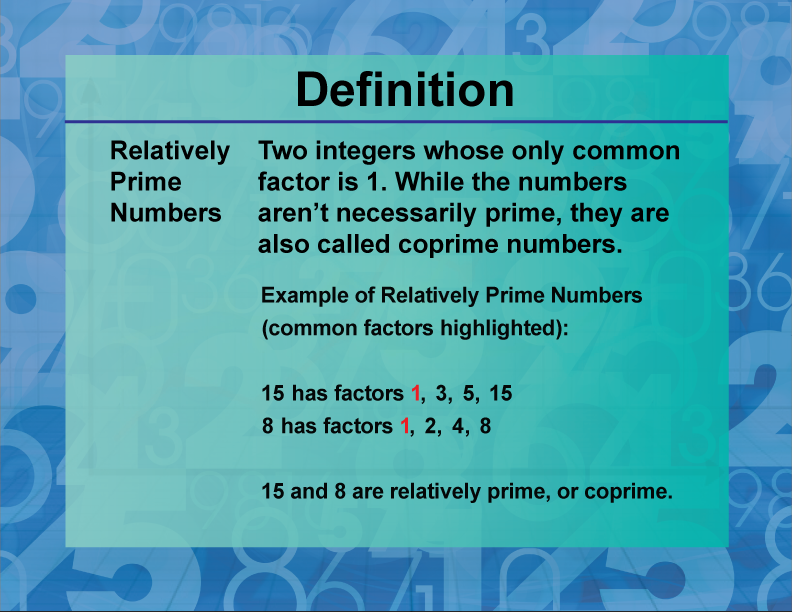
Display Title
Definition--Prime and Composite Properties--Relatively Prime Numbers
Display Title
Relatively Prime Numbers

Topic
Prime and Composite Numbers
Definition
Relatively prime numbers are two or more numbers that have no common factors other than 1.
Description
Relatively prime numbers, also known as coprime numbers, play a significant role in the study of prime and composite numbers. Two numbers are considered relatively prime if their greatest common divisor (GCD) is 1, meaning they share no prime factors. For example, 8 and 15 are relatively prime because their only common factor is 1, even though 8 and 15 are also composite numbers.
Understanding relatively prime numbers is crucial for various applications in number theory, cryptography, and algebra. In number theory, relatively prime numbers are used to solve Diophantine equations, which are polynomial equations with integer solutions. In cryptography, the concept of relative primality is fundamental to algorithms like RSA, which relies on the difficulty of factoring large composite numbers into their prime components. Additionally, in algebra, relatively prime numbers are used to simplify fractions and solve problems involving modular arithmetic.
For a complete collection of terms related to primes and composites click on this link: Prime and Composites Collection.
| Common Core Standards | CCSS.MATH.CONTENT.4.OA.B.4 |
|---|---|
| Grade Range | 4 - 6 |
| Curriculum Nodes |
Arithmetic • Numbers and Patterns • Prime and Composite Numbers |
| Copyright Year | 2021 |
| Keywords | composite numbers, prime numbers, factors, definitions, glossary term |